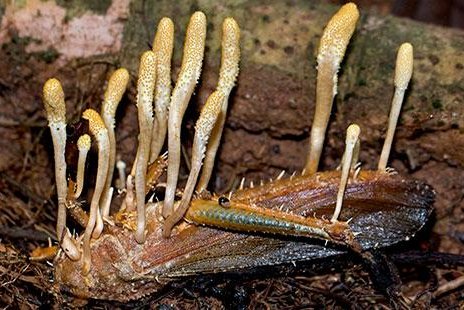Some of the most common fungal species, like the Cordyceps fungus, are able to colonize both plant roots and the carcasses of dead insects. Photo by Flickr/Aaron Pomerantz
May 31 (UPI) -- New research shows microbial communities in soils around the globe are less diverse than previously suggested.
In recent years, scientists have become increasingly interested in the role microbial communities in soil play in the ecological health of fields and forests. The unique microbial signatures of soil samples, researchers contend, can offer insights into the dynamics of different ecosystems.
But new research suggests soil samples host vast microbial populations, with the majority of fungi found in samples all over the globe belonging to a few common species.
"Scientists know that different fungi in soils are responsible for the way that forests and farmlands work," Eleonora Egidi, a postdoctoral fellow in the field of soil microbiology at the Hawkesbury Institute for the Environment, said in a news release. "The wide distribution of a few major fungal types could have been driven by agriculture as these fungi are often associated with crops."
Egidi and her colleagues sequenced the DNA of microbes in 235 soil samples collected from across the planet. Over the last two decades, the database of fungal DNA profiles has grown significantly, allowing scientists to quickly and fairly easily identify microbes in soil samples.
The study results, published this week in the journal Nature Communications, showed microbial communities in soil across the globe are dominated by the same few species.
"Whole-genome comparisons with less dominant, generalist fungi point at a significantly higher number of genes related to stress-tolerance and resource uptake in the dominant fungi, suggesting that they might be better in colonizing a wide range of environments," scientists wrote in their paper.
Researchers suggests an improved understanding of microbial distribution across global soils and ecosystems can aid conservation efforts.
"Having a baseline understanding of which fungi are out there in our forests, grasslands, farms and deserts can help us preserve these environments and find innovative new uses for many of the natural inhabitants of those places," Egidi said.
Scientists determined carnivorous fungal species were surprisingly common. The fungal species are able to colonize and eat the carcasses of dead insects. But the same species can also colonize plant roots.
"Given the remarkable versatility of interactions exhibited by these fungal lineages, we hypothesize that possessing flexible trophic capabilities may allow some dominant taxa to occupy multiple environmental niches," scientists wrote.















